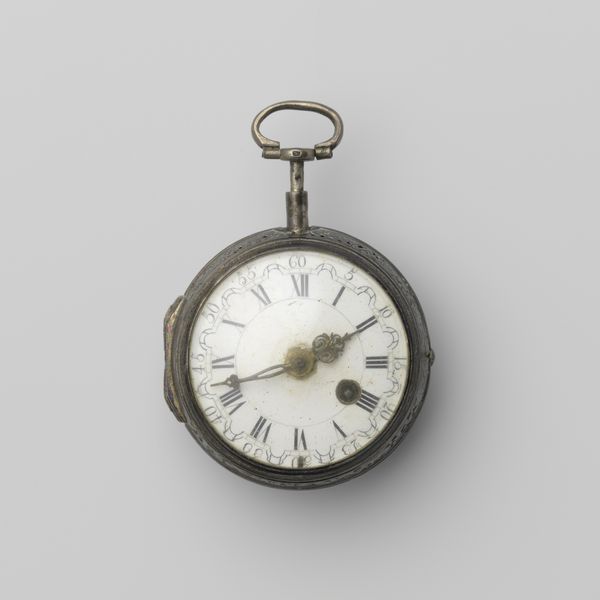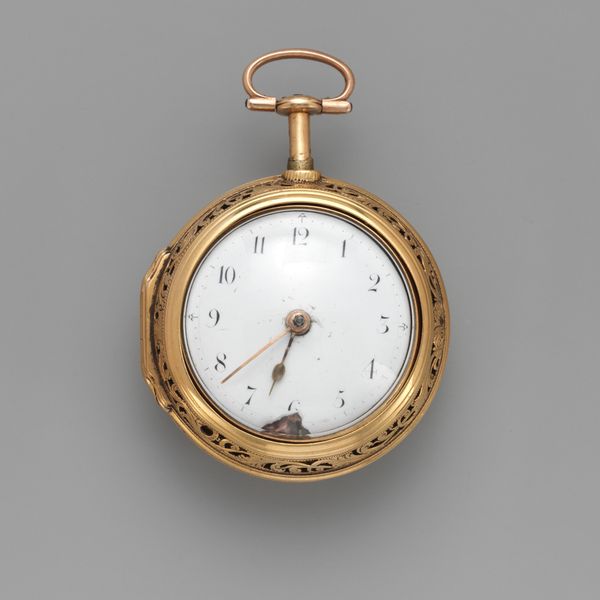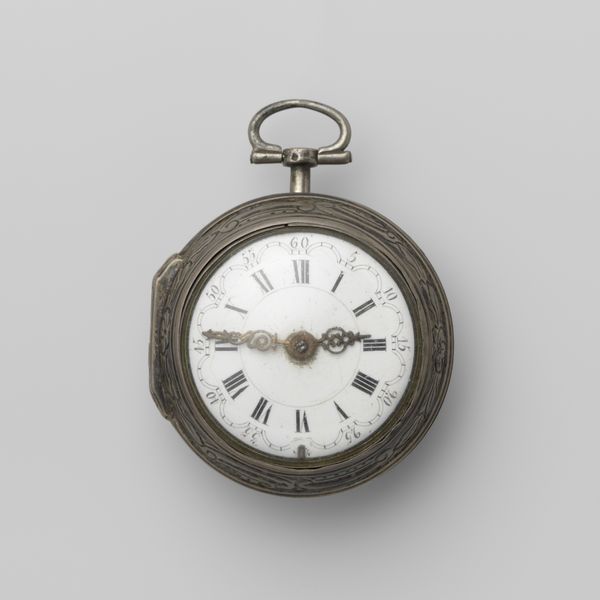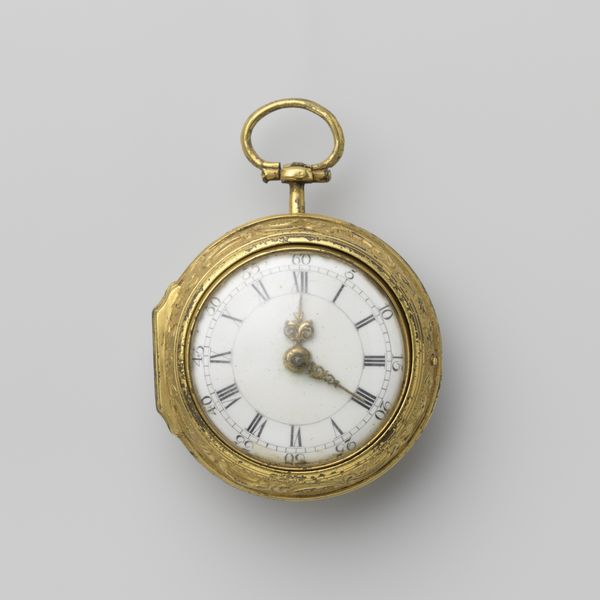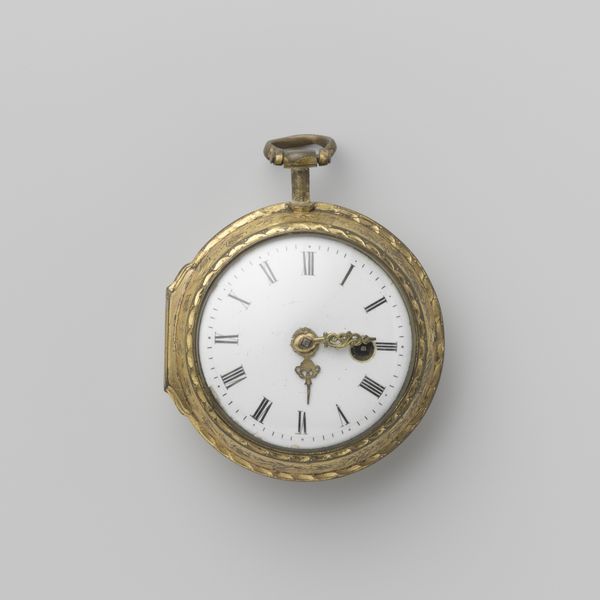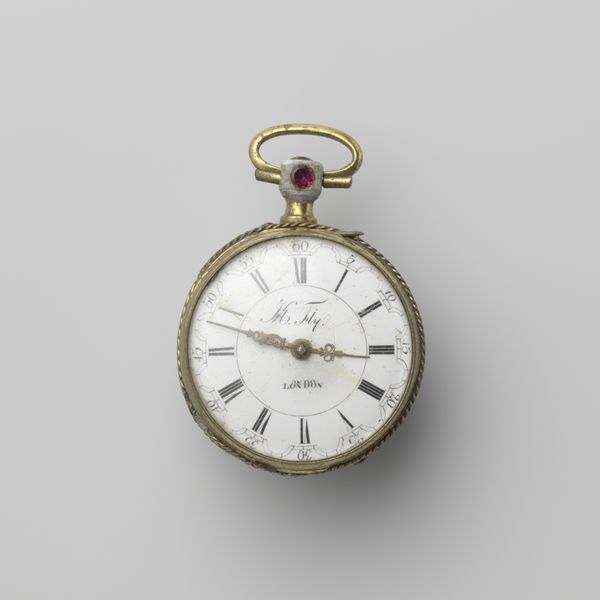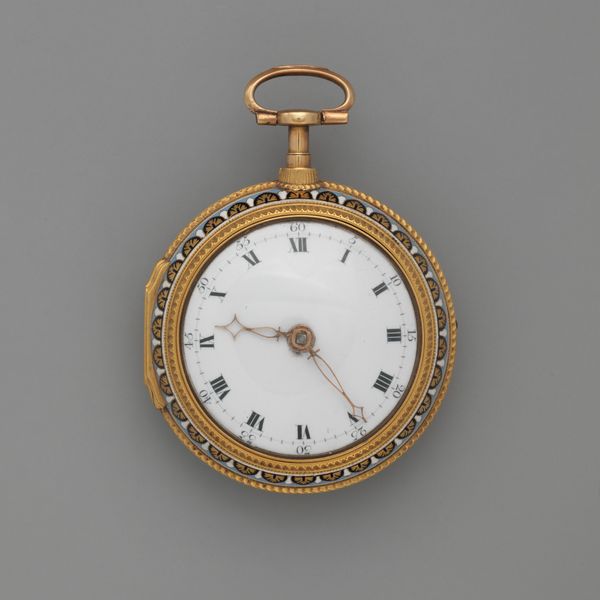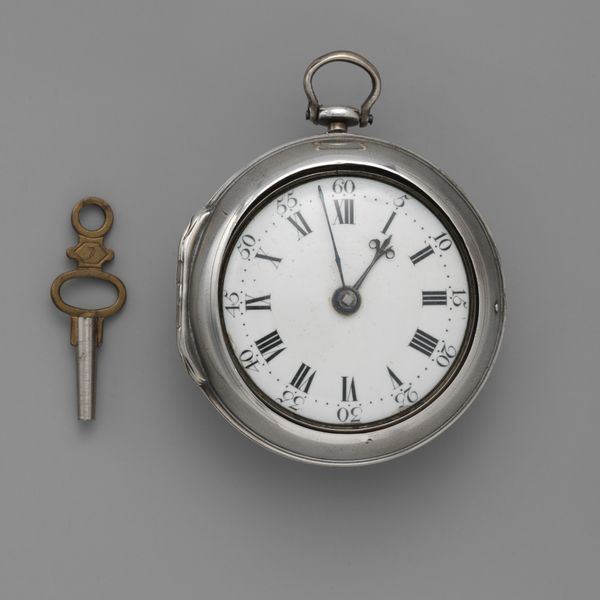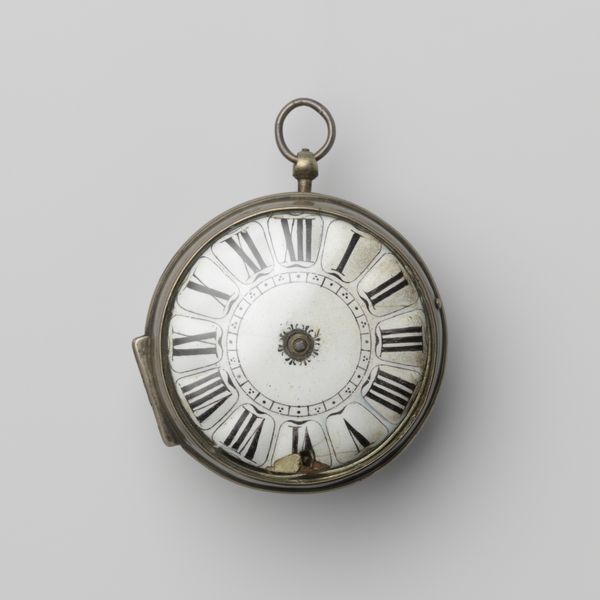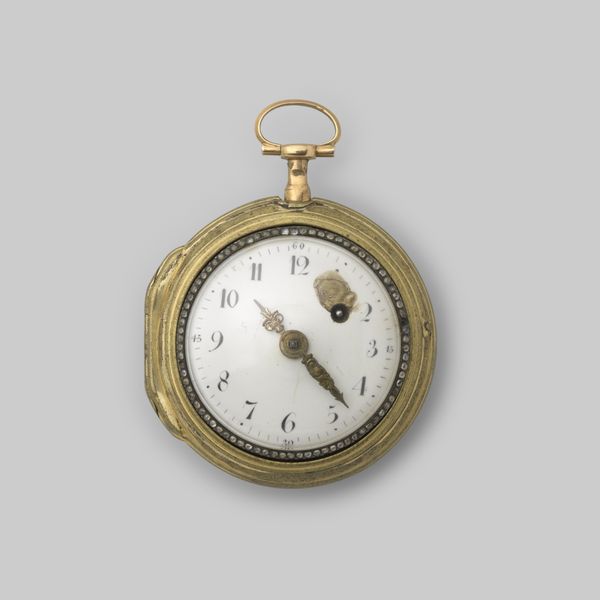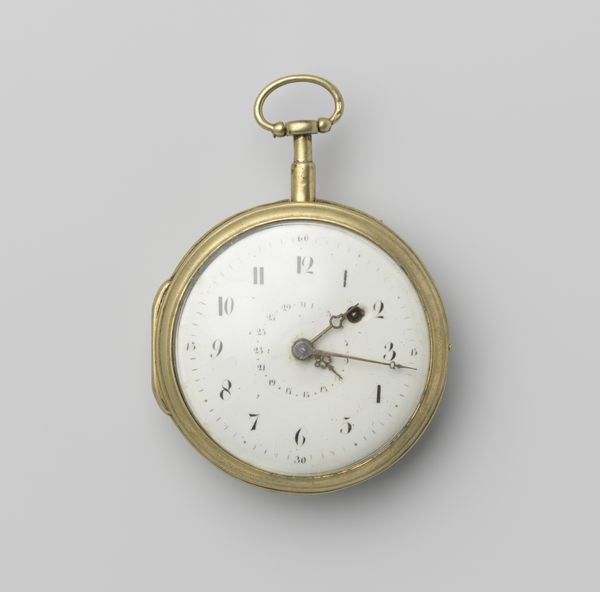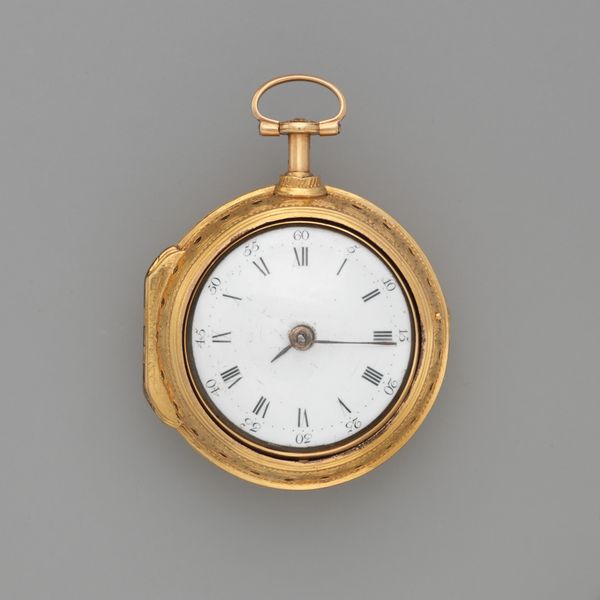
brass, metal
#
brass
#
metal
#
decorative-art
Dimensions: diameter 5.8 cm, height 7.9 cm, width 5.7 cm, depth 2.7 cm, length 14 cm
Copyright: Rijks Museum: Open Domain
Daniel Grignion, who died in 1763, made this pocket watch with a white enamel dial. In the 18th century, owning a watch became a status symbol and a way of measuring and controlling time. The watch embodies the Enlightenment ideals of reason, order, and progress. The Roman numerals and ornate hands reflect the classical influence on European art and culture at this time. But the rise of the watch also has a social history. It was connected to the growth of capitalism and the need for precise timekeeping in business and industry. The watch marks a shift in the perception of time, from a natural cycle to a commodity to be bought and sold. To learn more, you can consult horological journals, trade directories, and social histories of the 18th century. These sources will reveal the meanings attached to this small, yet significant, object.
Comments
No comments
Be the first to comment and join the conversation on the ultimate creative platform.

